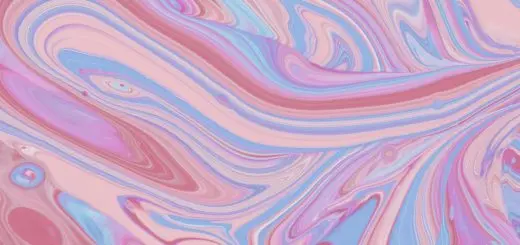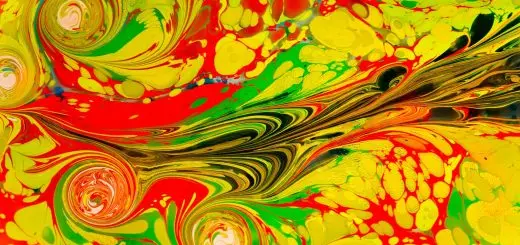What Are Complementary Colors? A Simple Explanation

Looking for more amazing products? Check out our online store and explore our collection here! Happy shopping!
Before diving in, please note: This post is for informational purposes only. If you’d like to know more about how we approach topics, feel free to check out our friendly Disclaimer Page.
Hey there, amazing readers! 
We’re committed to delivering quality posts, and your support (even just sticking around despite the ads) means everything to us. So, bear with us, and thanks for helping us keep the good vibes rolling. Now, on to the fun stuff!
TRANSLATE BUTTON AT THE END OF THE ARTICLE
A Quick Overview
Have you ever taken a moment to admire a sunset and noticed how the orange and blue hues just seem to pop against one another?
That striking contrast creates visual intrigue and harmony, achieved through the use of complementary colors.
If you’ve found yourself intrigued by the world of color, you’re in for a treat!
This article will dive into the delightful concept of complementary colors, making it easy to grasp.
By the end, you’ll feel empowered to incorporate these vibrant pairings into your artwork, design, or even just your wardrobe!
What Are Complementary Colors? An Overview for All
Complementary colors are pairs of colors that sit opposite each other on the color wheel.
When used together, these colors create a striking visual contrast that can elevate any design or artwork.
Imagine a bright red paired with a cool green or a sunny yellow contrasted with a rich purple.
The relationship between these colors brings balance and vibrancy, drawing the eye and creating focal points.
But why are these color combinations so powerful?
It’s all about the way our eyes perceive color.
Complementary colors not only highlight each other but also intensify their vibrancy.
When placed side by side, they seem to shine brighter than they would on their own.
This unique quality makes them invaluable tools for artists, designers, and anyone interested in creating visually appealing compositions.
In the art world, complementary colors can help convey emotions and set the mood.
For example, a trippy design using purple and yellow may evoke feelings of excitement, while blue and orange can create a more serene atmosphere.
Understanding complementary colors is a game-changer for anyone looking to enhance their creative projects!
The Color Wheel: Your Guide to Color Relationships
The color wheel is a visual representation that organizes colors in a circular format.
Developed by Isaac Newton in the 17th century, it showcases the relationships between different hues.
At its core, the color wheel is divided into primary, secondary, and tertiary colors, helping us understand how these colors relate to one another.
Primary Colors: Red, blue, and yellow.
These colors cannot be created by mixing other colors.
Secondary Colors: Green, orange, and purple.
These colors are formed by mixing two primary colors.
Tertiary Colors: These are made by mixing a primary color with a secondary color, resulting in hues like red-orange or blue-green.
Complementary colors are formed when you select a color and look directly across the wheel at its opposite.
For example, if you choose blue, its complementary color is orange.
This relationship gives you a roadmap for creating dynamic color combinations in your projects.
By familiarizing yourself with the color wheel, you’ll be able to see how colors interact.
It’s like a treasure map for your creativity!
Understanding the Basics: Color Theory Simplified
Color theory is the study of how colors work together and how they can influence perception.
At its core, it’s about understanding the emotional and psychological effects that colors can have.
Complementary colors play a significant role in this theory, illustrating how opposite colors can create harmony and vibrancy.
When we think about color combinations, we often consider the emotional responses they elicit.
For instance:
Red and Green: These colors often evoke feelings of excitement and festivity, making them popular during the holiday season.
Blue and Orange: This combination can create a calming yet energetic feel, often used in designs aiming for a friendly, approachable vibe.
Using complementary colors doesn’t mean you have to stick to traditional palettes.
Experimenting with different shades and tones can lead to unexpected discoveries.
Think about how a muted blue might pair with a vibrant orange for an inviting look.
The possibilities are endless!
Color theory can seem complex, but it’s ultimately about observation.
Take note of how colors interact in your environment, and you’ll quickly become comfortable with the concept.
Primary Colors: The Building Blocks of All Colors
Primary colors are the foundation of color mixing.
They are called primary because they can’t be created by mixing other colors together.
Instead, they serve as the source for all other colors.
Red: A warm color that often symbolizes passion and energy.
Blue: A cool color associated with calmness and tranquility.
Yellow: A bright and cheerful color that represents happiness and positivity.
By mixing primary colors, we can create a spectrum of secondary colors.
When you mix red and blue, you get purple; blue and yellow yield green; and red and yellow produce orange.
These combinations allow us to expand our color palette and create more diverse artwork.
It’s fascinating to think about how these three simple colors can generate an entire rainbow of hues!
Whether you’re painting a masterpiece or choosing a color scheme for your home, understanding primary colors provides a solid foundation.
Secondary Colors: Mixing Primary Colors for More Options
Secondary colors are the result of mixing two primary colors.
They add depth and variety to your color palette.
Each secondary color has its own personality:
Green: This color symbolizes nature and life.
It’s refreshing and calming.
Orange: A lively and energetic hue that radiates warmth and enthusiasm.
Purple: Often associated with luxury and creativity, this color brings a sense of elegance.
When used in conjunction with their primary counterparts, secondary colors can create stunning visual effects.
For example, a combination of green (secondary) and red (primary) can evoke feelings of tranquility while still maintaining a sense of excitement.
Mixing colors can be quite an adventure!
Don’t be afraid to try new combinations and see what resonates with you.
You might stumble upon a mix that speaks to your artistic soul.
What Makes Complementary Colors Unique and Special?
Complementary colors are unique because of the dramatic contrast they create.
When paired together, they amplify each other’s intensity and can create a sense of balance.
This phenomenon is known as color contrast.
One reason why complementary colors work so well together is that they create visual interest.
In design, using complementary colors can guide the viewer’s eye to the focal point of the piece.
For artists, this can mean directing attention to a central subject or enhancing the overall composition.
Using complementary colors can also evoke specific emotional responses.
When artists understand the emotional weight of color, they can use complementary pairs to amplify their message.
A bright blue sitting next to a bold orange can convey a sense of energy, while a soft purple and yellow may evoke warmth and comfort.
Complementary colors offer endless creative possibilities.
When applied thoughtfully, they can elevate any project, turning a simple design into something captivating.
How to Find Complementary Colors on the Color Wheel
Finding complementary colors on the color wheel is straightforward.
Simply locate the color you want to use, and then look directly across the wheel to find its counterpart.
It’s like playing a game of color tag!
Here’s a simple guide to some common complementary pairs:
Red – Green
Blue – Orange
Yellow – Purple
Cyan – Red-Orange
Magenta – Yellow-Green
Once you identify a color, identifying its complement becomes second nature.
Feel free to experiment by mixing various shades and tints to see how they interact.
Sometimes, the most unexpected combinations can lead to the most striking results!
If you’re still unsure about which colors complement each other, many online resources can help you visualize these relationships.
Color palette generators can even show you complementary combinations based on a color you already love!
Real-World Examples of Complementary Color Pairings
Let’s take a look at some real-world examples where complementary colors shine!
Nature: Think of a lush green forest with vibrant red flowers.
The green leaves highlight the flowers, making them look even more striking.
Fashion: A classic fashion combination is a navy suit paired with a burnt orange tie.
The colors complement each other beautifully, creating a polished look.
Interior Design: In a living room, a soft gray sofa can be paired with bright yellow cushions.
The yellow pops against the neutral background, adding vibrancy to the space.
Marketing: Many brands use complementary colors in their logos.
For instance, the blue and orange in the logo of a popular fast-food chain create a lively, inviting atmosphere.
Art: Vincent van Gogh famously used complementary colors in his paintings, such as “Starry Night,” where the yellow stars contrast against the deep blue sky.
As you can see, complementary colors are everywhere!
They enhance our surroundings and add excitement to our daily lives.
Let’s celebrate their beauty!
The Science Behind Why Complementary Colors Work
Why do complementary colors work so well together?
It’s rooted in the science of color perception.
Our eyes contain rods and cones that detect light and colors.
When we look at colors, our brain processes this information, and complementary colors create a unique response.
When complementary colors are placed next to each other, they engage our visual receptors in a way that amplifies their intensity.
This is called simultaneous contrast.
Our eyes perceive the colors more vividly, making them appear brighter and more dynamic.
This science is why complementary colors are often used in design and art.
They draw attention and create excitement, making the overall composition more engaging.
Understanding this can help you use color to enhance your projects effectively.
Using Complementary Colors in Art and Design
Incorporating complementary colors into your art and design projects can instantly elevate your work.
Here are some tips on how to use them effectively:
Create Contrast: Use complementary colors to highlight focal points.
For instance, a bright orange can draw attention to a central figure in a painting.
Balance Warm and Cool: Mixing warm and cool complementary colors can create harmony.
Pairing a warm red with a cool green can evoke a sense of balance in your artwork.
Experiment with Shades: Don’t just stick to pure colors!
Experiment with various shades and tints of complementary colors.
A muted purple with a soft yellow can create a more subtle yet impactful contrast.
Use in Patterns: Complementary colors work wonders in patterns.
Think of stripes or polka dots!
They can add an element of fun and energy to your designs.
Consider the Audience: Different colors evoke various emotions.
Keep your target audience in mind when selecting complementary colors.
For instance, a more vibrant palette may appeal to a younger audience.
With these tips in mind, you’ll master the art of using complementary colors in no time!
Tips for Effectively Incorporating Complementary Colors
Ready to dive into the colorful world of complementary colors?
Here are some helpful tips to get you started:
Start Small: If you’re nervous about using bold colors, begin with small accents, like a pop of color in accessories or artwork.
Test Combinations: Use swatches or digital tools to test color combinations before committing to them in a larger project.
Balance the Palette: Ensure that one color doesn’t overpower the other.
Find a balance that creates harmony in your design.
Layer Colors: Layer different shades of complementary colors to add depth.
This technique can create a more visually interesting composition.
Trust Your Instincts: At the end of the day, go with what feels right for you.
If a combination resonates with you, chances are it will resonate with others, too!
Remember, color is a personal journey.
Embrace the process and enjoy experimenting with complementary colors!
Embrace the Joy of Color: Experiment with Your Palette!
Color adds joy and vibrancy to our lives.
So why not embrace it?
Start playing with complementary colors in your daily activities, whether it’s sprucing up your home decor, enhancing your artwork, or selecting outfits that make you feel fabulous.
The journey of exploring color is like a treasure hunt.
You’ll discover new combinations, styles, and expressions that resonate with you.
Don’t be afraid to make mistakes or try the unexpected.
Sometimes, the best ideas come from taking a risk!
In your artistic endeavors, let your intuition guide you.
Remember, creativity knows no boundaries.
So grab your favorite colors, get inspired, and see where your imagination takes you!
Conclusion
Understanding and using complementary colors unlocks a vibrant world of artistic potential.
Whether you’re an experienced artist or an enthusiastic beginner, the principles of complementary colors can elevate your work to new heights.
From the science of color perception to real-world applications, the joy of playing with color is limitless.
Now that you have all this information at your fingertips, go forth and create!
Embrace the colors around you, experiment with pairs, and let your creativity shine like a dazzling rainbow.
Remember, color is not just about aesthetics; it’s about expression, emotion, and the stories you tell through your work.
Happy creating!

The Enlightenment Journey is a remarkable collection of writings authored by a distinguished group of experts in the fields of spirituality, new age, and esoteric knowledge.
This anthology features a diverse assembly of well-experienced authors who bring their profound insights and credible perspectives to the forefront.
Each contributor possesses a wealth of knowledge and wisdom, making them authorities in their respective domains.
Together, they offer readers a transformative journey into the realms of spiritual growth, self-discovery, and esoteric enlightenment.
The Enlightenment Journey is a testament to the collective expertise of these luminaries, providing readers with a rich tapestry of ideas and information to illuminate their spiritual path.
Our Diverse Expertise
While our primary focus is on spirituality and esotericism, we are equally passionate about exploring a wide range of other topics and niches 

To ensure we provide the most accurate and valuable insights, we collaborate with trusted experts in their respective domains 
Our blog originally focused on spirituality and metaphysics, but we’ve since expanded to cover a wide range of niches. Don’t worry—we continue to publish a lot of articles on spirituality! Frequently visit our blog to explore our diverse content and stay tuned for more insightful reads.
Hey there, amazing reader! 
Check out our store here and take a peek at some of our featured products below! Thanks for being awesome!












